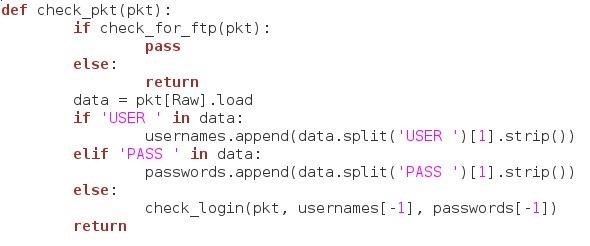

In another terminal or shell window, you can simply pick a host to ping.
Http sniffer python windows#
Open up a fresh terminal or cmd.exe shell under Windows and run the following: python sniffer.py Sniffer.ioctl(socket.SIO_RCVALL, socket.RCVALL_OFF)Īfter a single packet is sniffed, we again test for Windows, and disable promiscuous mode before exiting the script. # if we're using Windows, turn off promiscuous mode
Http sniffer python code#
This is just to test to make sure we have the core of our sniffing code working. Now we are ready to actually perform some sniffing, and in this case we are simply printing out the entire raw packet with no packet decoding.

If you’re running Windows in a virtual machine, you will likely get a notification that the guest operating system is enabling promiscuous mode you, of course, will allow it.
Http sniffer python driver#
The next step w is to determine if we are using Windows, and if so, we perform the additional step of sending an IOCTL to the network card driver to enable promiscu- ous mode. Sniffer.ioctl(socket.SIO_RCVALL, socket.RCVALL_ON) # if we're using Windows, we need to send an IOCTL Next we set a socket option that includes the IP headers in our captured packets. tsockopt(socket.IPPROTO_IP, socket.IP_HDRINCL, 1) # we want the IP headers included in the capture Promiscuous mode allows us to sniff all packets that the network card sees, even those not destined for your specific host. Note that we are using promiscuous mode, which requires administrative privileges on Windows or root on Linux. The difference between Windows and Linux is that Windows will allow us to sniff all incoming packets regardless of protocol, whereas Linux forces us to specify that we are sniffing ICMP.

We start by constructing our socket object with the parameters necessary for sniffing packets on our network interface u. Sniffer = socket.socket(socket.AF_INET, socket.SOCK_RAW, socket_protocol) # create a raw socket and bind it to the public interface In our first example, we simply set up our raw socket sniffer, read in a single packet, and then quit. Windows requires us to set some additional flags through a socket input/output control (IOCTL),1 which enables promiscuous mode on the network interface. We will create our socket object and then determine which platform we are running on. Packet Sniffing On Windows And LinuxĪccessing raw sockets in Windows is slightly different than on its Linux brethren, but we want to have the flexibility to deploy the same sniffer to multiple platforms. A Packet Analyzer (also known as a packet sniffer) is a computer program or piece of computer hardware (such as a packet capture appliance) that can intercept and log traffic that passes over a digital network or part of a network.Packet capture is the process of intercepting and logging traffic.


 0 kommentar(er)
0 kommentar(er)
